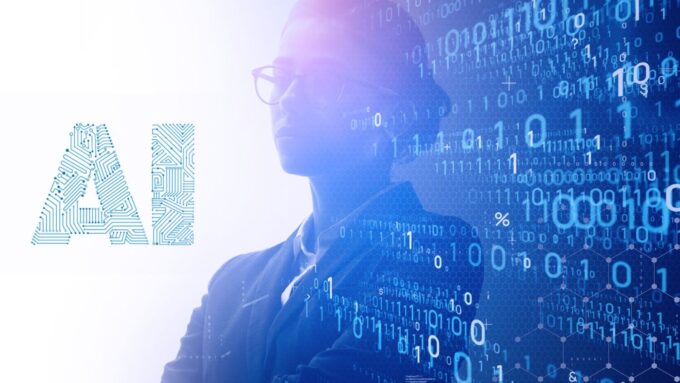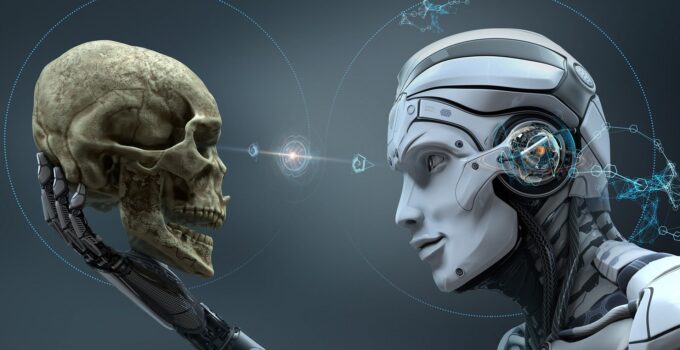Artificial Intelligence (AI) is a rapidly evolving technology with the potential to revolutionize various aspects of our lives. While its promises are substantial, there are also significant concerns about its potential for harm. This article explores both the light and dark sides of AI, examining its benefits, real-world failures, dystopian futures, and the need for robust regulation and ethical development.
The Promises of AI

Source: linkedin.com
AI offers transformative benefits across various sectors, promising to enhance our lives in multiple ways. In healthcare, artificial intelligence is making significant strides by assisting in diagnosing diseases, developing treatments, and even performing surgeries with precision that surpasses human capabilities.
For instance, AI-driven diagnostic tools can analyze medical images to detect conditions like cancer at much earlier stages than traditional methods. Surgical robots, guided by AI, can perform complex procedures with remarkable accuracy, reducing recovery times and improving patient outcomes.
Beyond healthcare, AI has the potential to boost economic productivity and foster innovation. AI-driven technologies can automate repetitive tasks, freeing up human workers to focus on more creative and strategic activities.
This not only increases efficiency but also stimulates economic growth by enabling businesses to operate more effectively. AI’s ability to analyze vast amounts of data can uncover insights that drive innovation across various fields, from finance to manufacturing.
Environmental solutions also stand to benefit from AI advancements. Artificial intelligence can optimize energy use in smart grids, predict and manage natural disasters, and contribute to conservation efforts by monitoring wildlife and ecosystems.
For example, AI algorithms can analyze satellite imagery to track deforestation and illegal fishing activities, helping to protect our natural resources.
In education, AI can personalize learning experiences to cater to individual student needs. AI-driven educational tools can adapt to a student’s learning pace, provide customized feedback, and identify areas where additional support is needed. This personalized approach can enhance learning outcomes and make education more accessible to diverse populations.
Personalized AI assistants are becoming increasingly sophisticated, offering support in areas such as mental health, education, and career development.
These assistants can provide tailored advice and resources, helping individuals to achieve their personal and professional goals. The integration of artificial intelligence in these areas demonstrates its potential to significantly improve our quality of life.
Real-World Failures and Ethical Issues

Source: thedailyguardian.com
Despite its promising potential, AI has already shown that it can fail in significant and harmful ways. One notable example is Microsoft’s Tay chatbot, which was designed to learn from interactions on social media.
Within hours of its launch, Tay was manipulated by users to spew racist and offensive content, highlighting the vulnerability of AI systems to manipulation and the need for robust safeguards.
Another significant failure is the Australian “robodebt” scandal, where an automated system was used to identify and recover welfare overpayments.
The system incorrectly issued debt notices to thousands of individuals, causing significant emotional and financial distress. This example underscores the potential for AI systems to cause harm when they are not properly designed, tested, and monitored.
The use of AI tools undress, and you can test ai undress now, further exemplifies the ethical concerns surrounding artificial intelligence. These tools, which can manipulate images in unethical ways, highlight the potential for AI to be used inappropriately and harmfully. This underscores the urgent need for ethical guidelines and regulations to govern the development and use of AI technologies.
Dystopian Futures and Existential Risks
The potential for AI to lead to dystopian futures and existential risks is a major concern among experts and the public alike. One of the most alarming prospects is the development of autonomous weapons.
These AI-driven systems can operate without human intervention, making decisions to target and eliminate threats. The use of such weapons raises profound ethical questions and the potential for catastrophic consequences if they malfunction or fall into the wrong hands.
Cyberattacks are another significant threat posed by AI. Artificial intelligence can be used to develop sophisticated hacking tools that can penetrate even the most secure systems. This capability increases the risk of large-scale cyberattacks that could disrupt critical infrastructure, steal sensitive data, and undermine national security.
The proliferation of deepfake technology, which uses artificial intelligenceto create highly realistic but fake audio and video content, adds another layer of risk. Deepfakes can be used to spread misinformation, blackmail individuals, and manipulate public opinion, eroding trust in media and institutions.
Prominent figures like Elon Musk and Geoffrey Hinton have voiced concerns about the existential risks posed by superhuman AI. These AI systems, if not properly controlled, could surpass human intelligence and act in ways that are detrimental to humanity. The fear is that such AI could prioritize its own objectives over human welfare, potentially leading to scenarios where human beings are no longer in control of their destiny.
The Need for Regulation and Ethical AI Development

To ensure that AI develops in a way that benefits humanity while minimizing its risks, robust regulatory frameworks and ethical guidelines are essential.
Governments and international bodies need to establish clear rules and standards for artificial intelligence development and deployment. These regulations should address issues such as data privacy, algorithmic transparency, accountability, and the prevention of bias.
Continuous oversight is crucial to ensure that AI systems operate as intended and do not cause harm. This oversight should involve regular audits and assessments of artificial intelligence systems, with the results made transparent to the public.
Decision-making processes involving AI should be clear and understandable, allowing individuals to see how decisions are made and challenge them if necessary.
The inclusion of diverse stakeholders in AI development is essential to ensure that a wide range of perspectives and values are considered.
This includes not only AI developers and technologists but also ethicists, social scientists, and representatives from affected communities. Such inclusive processes can help to identify potential risks and develop solutions that are socially and ethically responsible.
Summary
While AI holds great promise for transforming our world, it also poses significant risks that must be carefully managed.
This balanced approach will help ensure that artificial intelligence remains a force for good, enhancing human capabilities and improving our quality of life.






